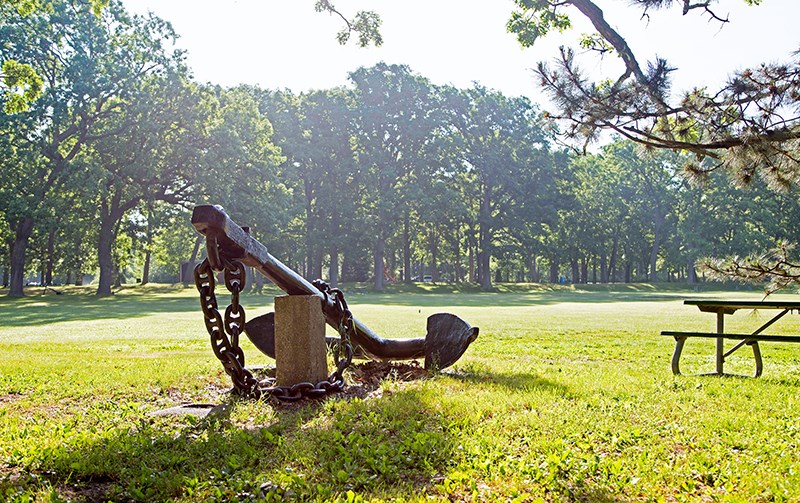Tom St. Amand
People are usually surprised when they learn Sir Winston Churchill sported a tattoo of a ship’s anchor on his right arm.

Although Churchill rarely displayed the tattoo in public, an anchor was an appropriate symbol for the First Lord of the Admiralty of the early 1900s.
Also appropriate, if not surprising, is that Sarnia as a port city has dozens of anchors on display within its borders.
Canatara Park alone has been home to two anchors for more than seven decades. They have sat on the edge of the central field since the 1940s, southeast and southwest of the starting line of the Terry Fox loop.
The smaller anchor arrived in Canatara before the larger one to the west, but little is known about it.
The larger anchor, however, has an interesting if murky history.
According to reports, a freighter in 1942 lost its anchor in the St. Clair River somewhere between Sarnia and Marysville. Eager to recover it, the ship’s captain hired Reid Wrecking Company to drag the river. The freighter anchor was never recovered, but Reid's employees instead pulled up this “mud hook” from the bottom of the St. Clair.
Sailors of the time claimed such anchors were used in 18th century “windjammers,” the collective name for many classes of large sailing ships. As photos from the 1940s show, the anchor was originally tilted so that one end of its wooden stock rested on the ground; however, the wooden stock has since been removed, probably due to deterioration.
And, a la MacGyver, those who brought the anchor to Canatara secured it by welding a newer chain onto it. The chain was found at the bottom of the river in another location.
The old “mud hook” is still sitting in the same spot more than 70 years later.
So why Canatara Park?
According to former Sarnia resident Keith Thomson, who was a lifeguard at Canatara in the 1950s, the park was the scene of much activity in the late '40s and early '50s, and adding historical artifacts to the property was part of that activity.
In 1973, superintendent Bob Harrison wrote that the Parks Board “has always tried to collect items of historical interest to the general area and have them located at Canatara Park.” The rationale, dating back to the 1930s according to Harrison, was that artifacts “can be maintained . . . for the enjoyment of future generations as a reminder of the past, and particularly so these items of historical interest are not lost.”
So the anchors remain but other artifacts have changed.
For a while, the anchors bookended a millstone, that was positioned opposite the brick building at the Terry Fox Loop starting line.
After the millstone fell into disrepair, the area between the two anchors was occupied by “Big Tom,” a 19th century cannon moved to Canatara in 1959.
“Big Tom” was returned in 2015 to its original home at Veterans Park where it had sat for 90 years, beginning in 1869 when Veterans Park was known as Market Square and later Victoria Park.
The two anchors, however, remain on guard. They will never be as famous as the anchor recovered from Blackbeard's ship or the Mont Blanc anchor shaft that flew over two miles across Halifax in that dreadful wartime explosion of 1917.
They are, however, a reminder of and a link to Sarnia's nautical history.
Tom St. Amand is a retired high school teacher in Sarnia
